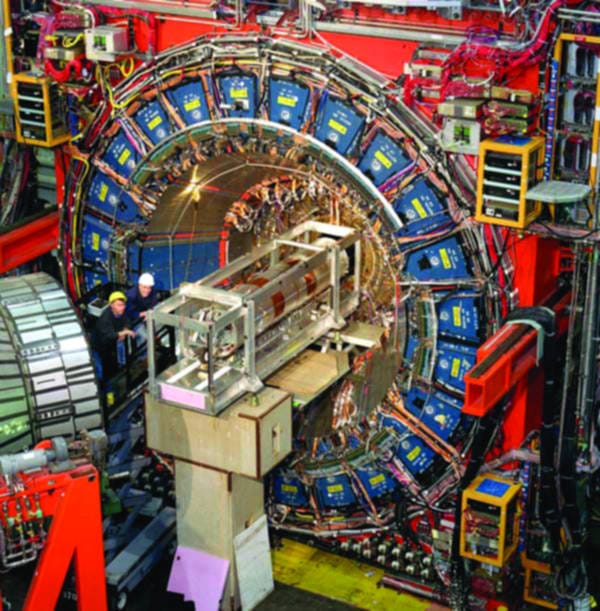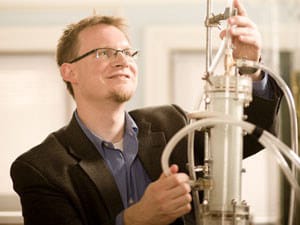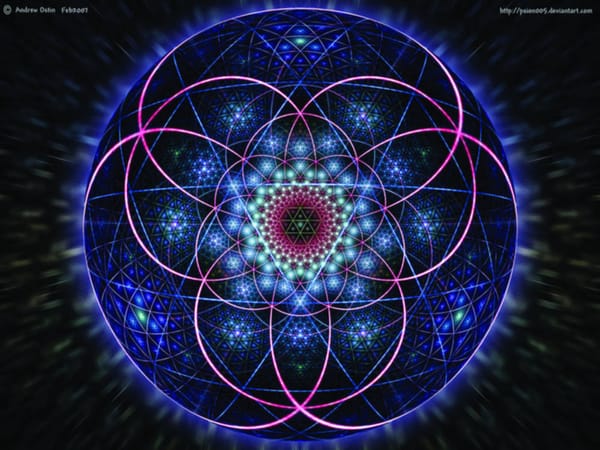Collaborations clash at Tevatron
Conflicting evidence over particle 'discovered' by Collider Detector at Fermilab

Earlier this year, the Collider Detector at Fermilab (CDF) collaboration tentatively put forward new results suggesting that they had observed a new, unpredicted particle. A month later they published more results that seemed to reinforce the earlier data. But last week the DZero collaboration, also at Fermilab, announced that they had tried to find the same particle – and failed.
DZero and CDF each have their own detector at Tevatron, a proton-antiproton collider at Fermilab in Batavia, Illinois. The detectors are physically different, so data collection and analysis for each happens separately, giving independent results.
The events of interest in this case occur when a proton and antiproton collide and produce a W boson – a type of force particle that mediates weak interactions between fundamental particles – and two jets of other particles. The rate at which this interaction should occur can be calculated using the standard model of particle physics. When the CDF looked at the data from a bunch of events they found that the rate at which a W boson was produced with two jets was higher than predicted by the standard model. This created a bump in the energy distribution of the two jets.
One way to explain this bump is that a particle, with a mass that corresponds to the energy of the bump, was created during the collisions. But no known particle has the correct mass, so the bump seemed to indicate that a new, unpredicted particle had been found. The statistical significance of the result was just below that needed to claim a genuine discovery.
However, when the DZero collaboration tried to replicate the CDF’s results they saw no bump, meaning no extra events and no new particles. DZero has submitted a paper to the journal Physical Review Letters detailing its findings, and the group held a seminar last Friday to announce the result before publishing a preprint of the paper online.
Since the DZero and CDF experiments were set up they have published around 500 papers between them and have only disagreed a handful of times. This time, the odds seemed to be stacked against the CDF – the Large Hadron Collider (LHC) at CERN also checked its data to see if any particle shows up with the mass expected, but found nothing.
Tevatron is due to shut down in September, as the LHC begins to overtake it, but data analysis will continue beyond the shutdown. A task force consisting of members of both the DZero and CDF collaborations, as well as theoretical physicists from Fermilab, has already been set up to coordinate a study of the two analyses. A spokesperson for the DZero collaboration told the journal Nature that they should already have more than enough data to resolve the conflict.
Several theory papers that try to explain the CDF results had already been submitted to the online preprint server arXiv before DZero announced their take on the findings. Even if the bump does prove to be a fluke, there are many reasons to look for physics beyond that provided by the standard model of particle physics. Any new result would be added to a long list of motivations for theorists to crack on with developing new models.









